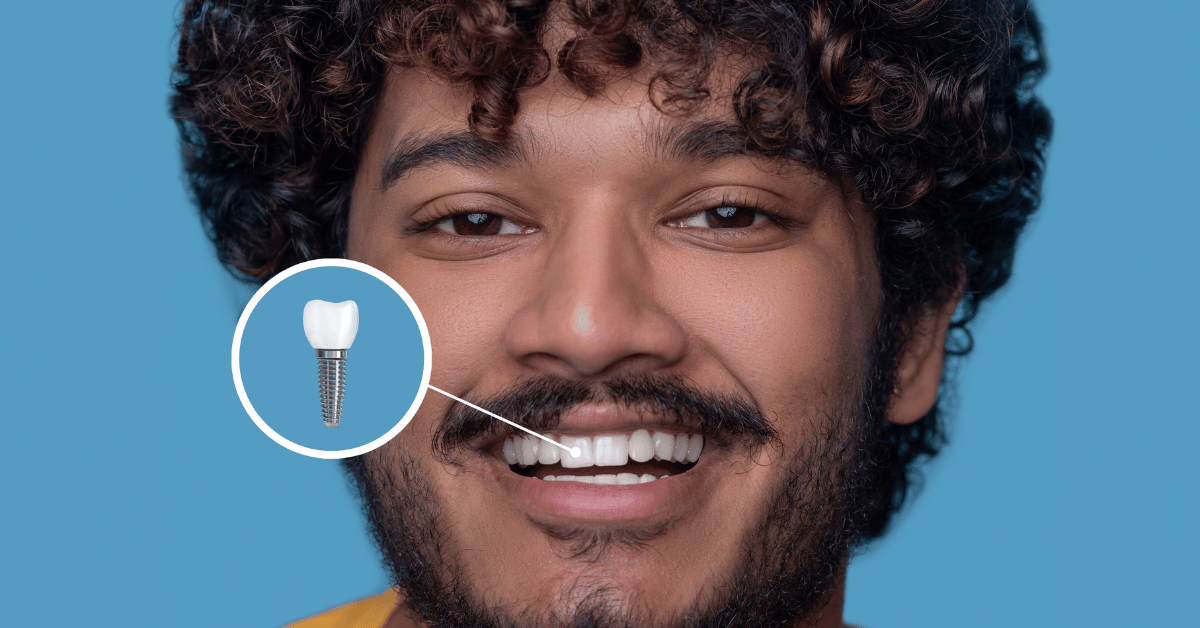Permanent dental solutions have transformed significantly in recent years, and screw-in teeth—formally known as dental implants—have emerged as one of the most dependable options for those seeking to restore both function and aesthetics. If you’re wondering whether screw-in teeth are worth the cost, how long they last, and what the procedure involves, this article will provide all the answers. Screw-in teeth involve implanting titanium screws into the jawbone to support fixed replacement teeth. These are not removable like dentures and are built to last, offering long-term durability and natural appearance. Patients choose them not only for chewing efficiency but also for restored confidence in their smiles.
This guide breaks down every stage of screw-in teeth: from the science behind the implant to costs, recovery, maintenance, and more. Whether you’re considering a single tooth replacement or a full arch restoration, we’ll explore each scenario with real-world insights, clinical context, and comparison tables to help you make an informed decision.
As the American Dental Association notes, “Implants are one of the biggest advancements in dental care in the last 40 years.” They are now safer, more customizable, and widely accessible. With screw-in teeth, you’re not just fixing a tooth—you’re investing in oral health stability for decades. We’ve compiled this comprehensive report based on expert insights, clinical experience, and what modern patients actually go through, including the long-term maintenance, success rates, and why implants now rival natural teeth.
Understanding Screw-In Teeth: A Foundation of Modern Dentistry
Screw-in teeth are more than just artificial replacements; they mimic the root and crown structure of natural teeth. Typically crafted from medical-grade titanium, the implant screw integrates with the jawbone—a process known as osseointegration—which offers stability far beyond traditional bridges or dentures. After integration, a dental crown or bridge is affixed on top, completing the restoration. What distinguishes screw-in teeth from other methods is their permanence and the ability to preserve jawbone density, which often deteriorates with missing teeth.
Unlike removable dentures that can slip or require adhesives, screw-in implants stay fixed in place. Patients report a marked difference in speech clarity, bite force, and long-term comfort. The initial phase includes a thorough consultation, bone density assessment, and sometimes, bone grafting if the jaw isn’t thick enough. Once the titanium post is inserted and healing occurs, a custom prosthetic tooth is attached. Though the procedure may span several months, the result is a lifelong solution with minimal need for adjustments.
“Dental implants fuse with bone, offering the closest thing to a natural tooth,” says Dr. Marlene S., an oral surgeon specializing in full-mouth restorations. “It’s a game-changer for patients who want reliability and beauty.”
Types of Screw-In Teeth Solutions: Single, Multiple, and Full-Arch Systems
Screw-in teeth are not one-size-fits-all. Depending on your oral health, number of missing teeth, and bone condition, dentists offer a variety of implant configurations. The three main types include:
- Single Tooth Implants – Used when one tooth is missing. A single titanium post supports a single crown.
- Implant-Supported Bridges – Ideal for patients missing several adjacent teeth. Two or more implants hold multiple prosthetic teeth.
- All-on-4/All-on-6 Implants – Full-arch restorations for patients missing most or all teeth. A set of four to six implants supports a full arch of teeth.
Each option varies in cost, healing time, and complexity. For example, All-on-4 solutions typically require fewer implants, reducing surgery time and cost, yet still provide complete dental function.
Here’s a breakdown of implant types:
| Type of Implant | Suitable For | Average Healing Time | Cost Estimate (USD) | Durability |
|---|---|---|---|---|
| Single Tooth Implant | One missing tooth | 3–6 months | $3,000–$4,500 | 20+ years |
| Implant-Supported Bridge | 2–5 missing teeth | 3–6 months | $6,000–$10,000 | 15–20 years |
| All-on-4 / All-on-6 | Full arch replacement | 4–8 months | $15,000–$30,000 | 20–25 years |
The final decision depends on bone quality, budget, and lifestyle. Modern diagnostic tools like 3D CT scans allow precision planning, minimizing errors and improving outcomes.
The Procedure: What to Expect at Every Stage
The screw-in teeth process involves multiple stages, beginning with planning and concluding with permanent prosthetic placement. The average timeline from consultation to final crown is around 4 to 8 months, depending on bone integration speed and whether bone grafts are necessary.
- Initial Consultation & Imaging
Dentists evaluate oral health and perform digital scans to assess jawbone thickness and nerve positioning. - Implant Surgery
The titanium screw is surgically inserted into the jawbone under local or general anesthesia. Healing time begins here. - Osseointegration Period
Bone gradually fuses with the implant, a critical step for long-term stability. This can take up to six months. - Abutment Placement
A small connector (abutment) is attached to the implant. This holds the prosthetic tooth securely. - Prosthetic Tooth Placement
A crown, bridge, or full arch of teeth is placed after customization and trial fittings.
Though it sounds complex, most patients report minimal discomfort post-surgery. Over-the-counter painkillers usually suffice, and swelling subsides in a few days. Regular follow-ups ensure everything is healing correctly.
Benefits and Long-Term Outcomes of Screw-In Teeth
Screw-in teeth offer several advantages that traditional dental restorations can’t match. First is longevity—implants can last decades with proper care. Secondly, they promote jawbone health by stimulating the bone through biting and chewing, preventing the sunken facial appearance associated with bone loss. Unlike dentures, which may need to be replaced every 5–7 years, implants are more cost-effective in the long run.
From an aesthetic standpoint, screw-in teeth resemble natural enamel in texture and color. They don’t shift, click, or pop out—offering a significant psychological boost for many. Functional benefits also include improved digestion from efficient chewing, clear speech, and the freedom to eat hard foods like apples or steak without worry.
“After getting implants, I finally stopped hiding my smile,” shares William D., a 62-year-old patient from Phoenix. “They feel like a part of me.”
Clinically, implant success rates are impressively high, often exceeding 95% over 10 years, especially when placed by experienced surgeons and maintained properly.
Cost Breakdown and Financial Planning for Screw-In Teeth
Cost is often the most daunting factor when considering screw-in teeth. However, the long-term value makes it a worthwhile investment for many. Below is a typical cost breakdown:
| Expense Category | Cost Range (USD) | Notes |
|---|---|---|
| Initial Consultation | $100–$300 | Sometimes deducted if treatment proceeds |
| CT Scans & Imaging | $250–$750 | 3D scans improve accuracy |
| Implant Surgery | $1,500–$2,500 per implant | Includes surgical placement |
| Abutment & Crown | $1,000–$2,000 | Custom-made porcelain or zirconia |
| Bone Graft (if needed) | $500–$3,000 | Required if jawbone is insufficient |
Most insurance policies still consider dental implants elective and provide partial or no coverage. However, financing options, dental discount plans, and payment installations are now widely offered at implant centers.
The upfront cost may seem steep, but when weighed against the recurring expenses of dentures—adhesives, relining, replacements—it often proves the better long-term choice.
Maintenance, Lifespan, and Common Issues
Screw-in teeth are low-maintenance but not maintenance-free. Regular brushing, flossing, and bi-annual dental visits are mandatory. Specialized tools like interdental brushes and non-abrasive toothpaste help maintain gum health and implant integrity.
While rare, complications can occur:
- Peri-implantitis: An inflammatory gum disease that affects tissues around the implant.
- Loosening of the crown: May require re-tightening or replacement.
- Implant failure: Occurs in smokers or those with chronic illnesses, but is under 5%.
To extend lifespan, avoid smoking, maintain oral hygiene, and refrain from using your teeth as tools. Some implants have lasted over 30 years in controlled cases, especially those placed in non-stress areas.
“Your implants can last a lifetime—if you treat them like your natural teeth, or better,” notes Dr. Leila Hamid, a restorative dentist from Chicago.
Myths vs. Facts About Screw-In Teeth
Despite their growing popularity, misconceptions abound. Let’s debunk some common myths:
- Myth: Implants are painful.
Fact: Surgery is minimally invasive and most patients report only mild soreness. - Myth: Only older adults need implants.
Fact: Adults of all ages choose implants for trauma, congenital issues, or decay. - Myth: Implants always require bone grafting.
Fact: Many patients qualify without grafts using advanced 3D planning. - Myth: You can’t get implants if you have diabetes.
Fact: Controlled diabetics often qualify with careful planning and healing protocols.
This clarity helps patients assess risks accurately rather than being discouraged by outdated beliefs.
Final Thoughts: Is the Investment in Screw-In Teeth Worth It?
Screw-in teeth have become the gold standard in permanent tooth replacement—not only because of their durability but also because of the confidence and function they restore. With success rates above 95%, a variety of design options, and ever-evolving technology like zirconia-based implants and guided surgical tools, they are more personalized and accessible than ever before.
If you’re suffering from missing teeth, ill-fitting dentures, or recurring dental bridges, implants offer a refreshing sense of permanence and aesthetic beauty. While the cost is undeniably significant, it’s important to view screw-in teeth not as a cosmetic procedure, but as a health and lifestyle upgrade.
As Dr. Mikhail Derksen puts it, “You’re not just buying teeth. You’re buying the freedom to smile, chew, and speak with total assurance.”
With that perspective in mind, this investment in screw-in teeth is not merely about dental repair—it’s about restoring quality of life. Consult your local dental implant specialist and begin the journey toward reclaiming your smile, one screw at a time.
FAQs
1. How long do screw-in teeth last?
With proper care, implants can last over 20–30 years or even a lifetime.
2. Is the implant procedure painful?
Most patients report only mild soreness post-surgery, easily managed with over-the-counter medication.
3. Can I eat normally with screw-in teeth?
Yes, you can eat almost any food, including tough or crunchy items.
4. Are screw-in teeth covered by insurance?
Coverage varies. Some insurance plans offer partial payment, but many treat implants as elective.
5. What if I don’t have enough bone for implants?
Bone grafting can restore jaw support, and newer techniques may reduce or eliminate the need.











